7 The Transition to Raw Food
Various methods to cleanse the colon, our primary defense organ against diseases. Importance of intestinal flora. Colonoscopy.
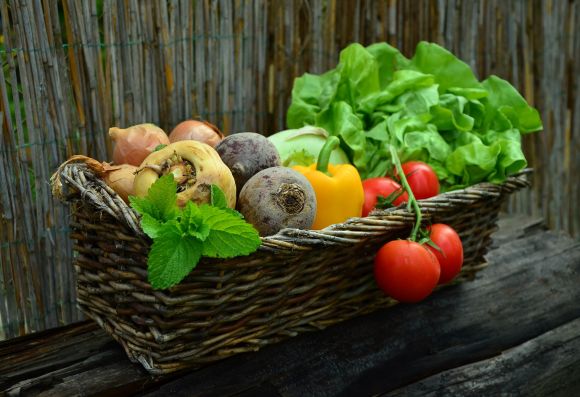
Table of contents
Summary
Before you start on a raw food diet, you should prepare your entire digestive system (digestive tract) so that you can more safely benefit from your efforts.
| There are several ways to do this, one of which I will recommend here. I find the others to be mostly unpleasant. Raw food can, of course, be introduced gently, but colon cleansing is a proven method. See also detoxification. |
If you started with the first article in this series about raw food, you have already read why the intestine is probably the most important “health organ” for your immunity against diseases.
Given its important immune functions, it is well worth the effort to cleanse the colon. Afterwards, it will be better able to promote a healthy environment of microorganisms.
You probably are also familiar with the fact that enzymes in the mouth, stomach, and intestine (duodenum and small intestine) break down food, and the body absorbs suitable elements in all of these organs. I assume you understand the benefits, functions, and importance of the gut flora (or gut flora of the colon), which is also called the gut microbiota.
You are familiar with the three phases of transitioning to a raw food diet: the adaptation of the digestive system, your sense of taste, and your body. Changing over to a raw food diet is voluntary; you should not begin until you are convinced of the benefits of doing so.
My recommendation for colon cleansing
If you are older and have not had a colonoscopy for a number of years, a colon cleanse would be good opportunity to do so. The colon has to be cleansed anyway before such an examination.
This can be done, for example, using a "Golytelysolution" or salt mixture. A person has to first drink three liters of this solution within two hours. An outpatient colonoscopy can be done no earlier than 3 to 5 hours after this preparatory step.
PEG (polyethylene glycol or macrogol) or better yet a polyethylene glycol electrolyte solution (PEG-EL) is also used in gastroenterology and two liters of this solution suffice. This is also called orthograde colon cleansing.
People with a chronic illness and also pregnant and nursing women should not undertake a colon cleanse or detox cleanse unless they have consulted their physician. Taking Glauber’s salt or Epsom salts is the simplest method. A more thorough method would only be advantageous if you are particularly afflicted with toxins or overweight. See below.
However, if you prefer not to do the colon examination or cleanse proposed here, you can find a recommendation on where to find recipes for preparing raw food toward the end of this article.
If you have a family history of cancer (colorectal cancer), it is very important to get a colonoscopy as this is an important preventative measure. And, for example, if any colon polyps are found, these can be removed directly. You will receive important information about the condition of your colon. Colon cancer at its early stage can usually be taken care of with surgery. Advanced stages of colon cancer are fatal.
How do I start with raw food?
But you might ask, “How do I start with raw food?”
Unfortunately, you may not know any raw foodists or strict vegans with whom you can exchange ideas. Without a well-conducted experiment, you will not be able to see or even imagine the changes.
Many people consider raw food diets to be extreme. However, they are most likely not familiar with the benefits it has for our body and do not realize that it was actually “our” original diet. They likely believe it to be an esoteric belief that really does more harm than good. This makes the decision more difficult because people usually learn from their mistakes.
By then, however, it may be too late. All I can recommend is that you compare the health and athletic performance of raw foodists and vegans with others in the same age bracket. These vegans and raw foodists shouldn’t be sectarian or adhere to special forms of a raw food diet. Look for ways to get to know other raw foodists and vegans.
1. Switching to raw food is an important step
You might have heard good reasons to change over to a raw food diet, but you may also have heard of disadvantages. Do you know what own health condition is and have you learned how to get advice? If you still have concerns, simply take the time to weigh the pros and cons.
| Colonic polyp in the sigmoid colon (ileum) before removal. Such early detection and removal is an important measure to prevent cancer (cancer prevention). The link includes information on the great importance your diet has in preventing cancer. Cancer protection would be the positive result and animal-based products certainly do not contribute to that! |
Meat promotes colon cancer and stomach cancer, a fact that you can now even read on Wikipedia.
Why not spend time in a raw food clinic or at a raw food hotel and meet people who have experience eating a raw food diet? Not quite so personal, but perhaps just as interesting would be to ask questions in a raw food forum on the Internet or follow these types of forums. But then you will really need to have the ability to recognize what is most important and have a good understanding in order to identify recurring themes.
1.1. The switch in general
When switching to raw food, you should know that an existing massive fungal infection in the gut (e.g., candidiasis) reacts differently than with cooked foods since raw foodists often consume quite different types of food. In the beginning, it is important to watch out for enzyme weaknesses or metabolic disorders. Although these may be rare, they do occur. If you think you could have irritable bowel syndrome, you should get an examination.
You can usually tell right away from the way you feel whether a specific type of food agrees with you. If you have difficulties, you may need advice. Through the Internet, you can meet people who are in the same situation. They usually enjoy helping out.
Trust, but be careful whom you trust
Unfortunately, you will also read a lot of nonsense. But you should be able to separate the facts from the nonsense. However, this is sometimes easier said than done because you will need an active mind with good logic and a certain level of knowledge to understand what it is reasonable.
The unconscious defense mechanism, a part of a person’s character (character types, personality, and moral character), also plays a role. Paradoxically, knowledge can also be wrong and lead to incorrect conclusions. Relevance (meaning) and statistical significance should also be considered.
Are you the playing ball or are you playing the ball? Avoid unmoderated forums. If you follow the opinion of the masses or rather public opinion, you are the playing ball.
If you seek out real knowledge, this will allow you in time to play the ball. It is important here to “Trust, but be careful whom you trust” (fide sed cui vide).
| Something on the topic of reason and logic although at first glance it appears very paradoxical. There is a good reason for the empty square even though the individual interchangeable shapes appear to be exactly the same in both cases. An animated solution to this optical illusion can be found at the end of this article. |
In fact, your body weight will automatically return to its “biological ideal weight” within about four to six months of eating a raw food diet.
My experience
Before I changed back to raw food in 2001, I weighed between 163 and 165 lbs (74–75 kg). I am 5'8" or 1.77 m tall.
But after about five months, I was down to 143.3 lbs (65 kg), which is how much I weighed when I was 18 years old.
My biological ideal weight (BMI = 20) is 136.6 to 138.9 lbs (62–63 kg). However, I like to eat, so my weight (2001) usually fluctuates between 143.5 and 145.5 lbs (65–66 kg).
In 2014, after just returning from a vacation where I ate some cooked food, I weighed between 148 and 150 lbs (67–68 kg).
In the summer of 2001, I felt a type of piercing pain around the area of the pancreas and gallbladder for a few weeks and then this same pain on the left side of my stomach. Since I trusted my system, meaning raw food and my body’s immune system, I didn’t go to the doctor. And after a few weeks these pains disappeared on their own.
Today (2014), I know that I have gallstones in my gallbladder and two giant liver cysts in my liver. As long as no real problems arise, a conventional doctor would not advise taking any action. A raw food diet doesn’t heal some issues, but it does improve how your system functions.
People who are truly “poisoned,” such as heavy smokers or people who consume a lot of protein may experience different symptoms. The body begins a kind of detoxification, which may temporarily make preexisting problems worse or bring new problems to the surface.
However, if you have problems during the transition period, I would advise that you find a doctor who has experience with raw food diets. If this isn’t possible, you should look for an understanding doctor who can assist you and, if necessary, check out any “strange symptoms.” Unfortunately, it has not yet been possible to provide a list of such physicians.
In this age of the Internet, it is even easy for beginners to share their experiences. Share your experiences with us or the readers at the end of this article, perhaps also your experiences with doctors. We would specially like to list physicians who are interested in raw food as doctors are not allowed to recommend themselves.
1.2. Switching at an older age
When the body has been abused for decades, the transition to raw food is often difficult. Some people are only able to give up old familiar habits and plunge into an adventure after they face a life-threatening health crisis. In addition, many of these people suffer from dental problems, digestive difficulties, enzyme weaknesses, and also a less than optimal gastrointestinal system caused by decades of cooked food.
Make a compromise
At the beginning, it is often difficult to chew the fiber-rich, plant-based foods sufficiently. Bloating, diarrhea, or abdominal cramping can therefore occur. Raw food can, of course, be puréed (mashing) for older people, but they instead often ask for cooked food. This is because things used to be cooked to an extent that people considered it to already be “half digested.”
It may therefore be useful to make a compromise (if possible temporarily) and eat steamed vegetables, potatoes, and the like [217-8] when starting on a raw food diet. However, I believe that this may promote intestinal problems since cooked and raw foods are digested quite differently in the gut. More information on the gastrointestinal tract is found further down in this article.
 | Numerous books are available on how to prepare delicious raw food. There is currently a lot more pressure for people to change their diet in the United States than in Europe since the majority of Americans have poorer eating habits. Most people there eat to satisfy their palate, not the needs of their body. |
2. Gut flora and nutrition
Few people know how extremely important the gut flora is for the human body. Dysbioses (dysbacteriosis) and intestinal mycoses, in particular, cause immune deficiencies and a lack of vital substances.
Bacteria — friends or foes of humanity?
As early as the 1930s, cancer researcher and biologist Dr. Paul-Gerhardt Seeger wrote the following in his comprehensive work Bakterien – Freunde oder Feinde des Menschen?” (Bacteria — friends or foes of humanity?):
Maintaining anaerobiosis (free of oxygen) in the colon is of crucial importance for the health of the organism, and this is dependent on the type of food consumed. Fresh foods and lacto-fermented foods are very rich in reductions (hydrogen and energy) and pass into a lower-energy state by binding oxygen while releasing energy; this reducing capability is destroyed by cooking food.
Cooked food (e.g., meat and other common foods) harms the environment and flora in the intestine by introducing oxygen and destroying the anaerobiosic condition in the intestinal lumen that is necessary for the metabolism of certain bacteria (bifidobacteria).
The color of a person’s stool indicates whether the redox processes in the gut are normal or not. Anaerobic, healthy stool has a light yellow color because the bile pigments occur only in reduced amounts. When you eat fresh plant-based foods, the feces will have the characteristic pale yellow color of an infant’s stool
[224-9].
There are now many books available that deal with intestinal health, but many of these describe the situation quite differently.
In any case, a healthy person has a very different type of gut flora as part of their microbiome as compared to an unhealthy person. But even in healthy people, there are a number of reasons why variations are common.
Colonization by bacteria at birth occurs quite differently for a caesarean (caesarean section) than for a natural birth. After this, the nourishment the infant receives, its eating habits as a child and adult, and some additional factors are of great importance.
There are approximately ten times as many microorganisms in the intestine than there are cells in the human body
There are at least 500–1000 different species of microorganisms active in the intestine of a human adult. This ecosystem is made up mainly of anaerobic bacteria (bacterial flora) numbering in total from 10 to 100 trillion.
The total mass of the microflora in the intestinal tract of an adult is between 1'000 and 2'000 grams. Over 50 % of the microorganisms in stool samples that can be seen with the microscope cannot be cultured.
There are also some fungi in the intestines, but they need to be of the right type and in the right quantity.
A poor diet and/or the wrong type of gut flora occasionally lead to putrefaction in the colon. Such putrefaction occurs because the passage time for food from the mouth to anus with the “Western diet" is between 7 to 60 hours for men and 10 to 70 hours for women. This information was provided by an internist (internal medicine). Another internist stated that half a day to four days is normal.
The time the food spends in the individual sections
The time the food spends in the individual sections are:
- mouth 5 minutes (would be good),
- stomach 1–2 hours,
- small intestine 1–2 hours,
- and colon 8–100 hours.
Nevertheless, bowel movements may be regular, in other words, not just every four days at 100 hours of passage time. People who are obese or have constipation or even chronic constipation suffer longer passage times and are therefore at a higher risk for colon cancer. One possible cause of this is malnutrition.
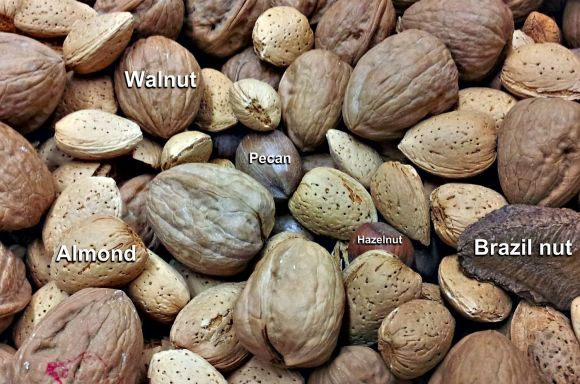
Culinary nuts stay good for a long time if they are stored properly, even for years. This image shows nuts in shells, walnuts, almonds, pecans, hazelnuts, and Brazil nuts.
Nuts and similar products do not spoil when stored in a dry place for several weeks or months. Fresh fruit, on the other hand, takes only a few days to weeks to rot. But the differences between various types of fruit are enormous. Vegetables do not stay fresh as long, but even so it takes a few days before there are visible signs of the decay process.
But unrefrigerated milk, meat, and fish spoil much faster. An egg would also be attacked very quickly by microorganisms if there were no protective shell or packaging. Cooked food usually spoils faster than raw food.
These processes are also much faster because the temperature inside the body is much higher than normal room temperature. And animal products tend to move through the intestines much slower than plant-based products.
It is not without reason that the colon has to be cleansed
The objection that food is digested within the stomach and the small intestine to such a degree that fermentation or putrefaction would not take place is not quite true. Rather the opposite is the case for many substances. The colon is full of microorganisms that are waiting to feed on the substances offered.
It is not without reason that the colon has to be cleansed aggressively and not just emptied prior to surgery and also prior to a colonoscopy. I don’t know how far we have to follow the different authors with their different views on colon cleansing. Their descriptions of the possible state of your colon and the multiple layers of deposits are hopefully somewhat exaggerated.
If you want to do it properly, choose a method that suits you. I do highly recommend you do a colon cleanse.
Vegan raw food prevents decay in two ways: the gastrointestinal passage only lasts about 24 hours, and the food has a longer shelf life even at 96.8°F (38°C).
If deposits of old stool residues (stagnation) remain in the intestine, the typical smell of feces will not disappear and there remains a risk of “self-poisoning processes” (autointoxication).
I explain more elsewhere about the entire digestive process to help you understand the various relationships. These processes also largely determine your body odor.
This commonly gets covered up with daily showering or bathing (skin flora), which isn’t good for your skin. Read more on Wikipedia about the dangers of washing your skin too often (April 2014).
3. Colon cleansing
You now know the reasons and advantages of doing a colon cleanse before switching to a raw food diet. It will help you to avoid the problems described above.
Gray wrote: Long-term malnutrition can disturb your digestive system so much that just eating an apple can cause problems.
The digestive system should be able to adjust to the much shorter passage time of raw food within approximately one week.
Reasons and advantages of doing a colon cleanse
But even if you don’t experiencing such problems when you improve your diet, it is best to thoroughly cleanse the colon of old residues. A colon cleanse makes the transition from a meat-based diet to a vegetarian or vegan diet much easier.
This excerpt from Wikipedia (German version) describes why it is beneficial to get a colonoscopy after colon cleansing: Colorectal cancer is the second most common type of cancer for men and women in Germany, afflicting more than six percent of all Germans in their lifetime. It is very rare that colorectal cancer initially causes any symptoms, they almost always are caused by benign colorectal polyps.
It should be noted that polyps are harmless when removed. If the cancer is still localized, surgery offers a very good chance for recovery rather than certain death. However, if metastases are present — whether discovered or not — the medical prognosis will be very poor. This is why I advise you to get the condition your colon checked at an early stage.
3.1. Overview of the different methods
For Gray, deposits and sediments in the intestines play a big role. He believes that a colon cleanse before the actual transition to raw food is valuable. Some authors recommend enemas, fasting, and teas made from dandelion or thyme. This is not always enough, says Gray.
Enema, colonic irigation, clay
An enema stimulates the colon and has healing reflexes for many parts of the body. This gives a strong boost to healing itself, but actually cleanses little of the undesirable substances from the colon.
Even a colonic irrigation (colon hydrotherapy) is not much better. According to Dr. Norman Walker and other experts, only repeated colonic irrigations, accompanied by a diet of raw fruits and vegetables, will bring about effective results. The water should always be at about body temperature and must not contain chlorine. Taking clay, pumice, or bentonite supports the procedure.
In German-speaking countries, clay is especially well known as a method of colon cleansing. It removes stagnant material, and if you take psyllium seed husks (Plantago ovata) at the same time, that will support the process.
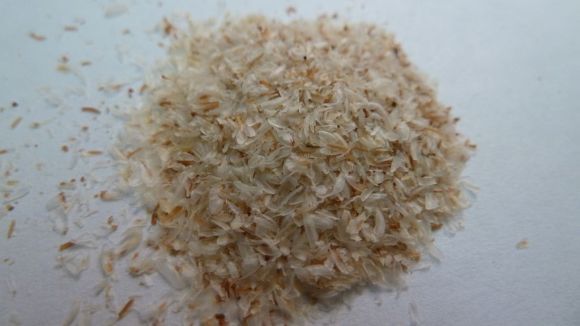
However, clay minerals should not be used for too long. Since psyllium seed husks decimate the lactobacilli (alt = lactobacteria), daily use should not exceed two months [249-118].
Coffee enemas (Gerson Therapy) are an especially common method of colon cleansing in the United States.
Taking medicinal herbs is more effective in handling mucoid plaque
Taking medicinal herbs such as aloe, barberry (Myrica cerifera), iceberg lettuce, yellow broad-leaved dock, gum arabic, Irish moss, corn fiber, olive oil, rosemary, chives, grapes, and zucchini is more effective in handling mucoid plaque. Aloe vera, iceberg lettuce, gum arabic, and Irish moss also work to clean the lymph. A brush massage is a more effective method of lymph cleansing.
There are about 24 medicinal plants known to be effective against mucoid plaque, and half of these also have an unclogging effect and can help alleviate constipation.
If you do not want to “endure” enemas and have to gather together numerous active ingredients, then fasting will only result in partial success. There is also a less complex procedure, which I explain after the section on therapeutic fasting.
3.2. The simple detox cleanse
A simple detox cleansing (mechanical intestinal cleansing) with Glauber’s salt or Epsom salts (magnesium sulfate) generally suffices. You can get these, for example, at your pharmacy. Glauber’s salt is the common term for sodium sulphate decahydrate (hydrates) and is considered a simple laxative. It accelerates defecation and works against constipation. Laxatives should not be used regularly, unless they are so prescribed by a physician.
Colon cleansing can cause problems — particularly true in the case of children — because of the stress on the kidneys (glomerular filtration rate, GFR). Bowel obstruction, stenoses, unexplained abdominal pain, heart failure, renal failure, or electrolyte imbalances would also be reasons not to do a colon cleanse.
Epsom salts
The use of Epsom salts is prohibited if the person is afflicted with hypermagnesemia. Glauber’s salt irritates the intestinal mucosa.
Wikipedia (German version): Laxatives are the drug of choice if actual constipation (i.e., bowel movements less than three times a week in combination with straining) cannot be treated by a change in lifestyle. A change in diet that includes an increased intake of dietary fiber in combination with sufficient fluid intake and increased physical activity can help stimulate bowel function and improve stool consistency.
Epsom salts are also called passage salts by one company because the additives they contain made it less unpleasant to take these salts. About 100 g of Epsom salts is enough for some time. Add two or three heaping teaspoons to a glass of slightly warm water and stir well. Have another glass of water ready to immediately wash down any unpleasant taste after you drink the whole glass of Epsom salt solution, ideally in one gulp. The effect will be felt in one to three hours as a strong urge to defecate.
Glauber’s salt
Glauber’s salt (Carlsbad salt, sal mirabiis (miracle salt), mirabilite, and Mirabili) is the alternative. Dissolve 40 g of Glauber’s salt in 2 cups (0.5 liters) of water and add a little lemon juice. Then drink this solution sip by sip. After this, drink plenty of water or herbal tea. The effect will set in after one to three hours with this solution as well. If no effects can be observed with either of these methods, repeat or choose one of the methods described below instead.
Tip: Before starting a detox cleanse, give your body two days without any overly acidic foods such as meat, cheese, milk, white flour, sweets, alcohol, coffee, black tea, and green tea. You should eat only fruits and vegetables to give your digestive system a break. To get a real detox process started in your body, this would be followed by a week or two on a strictly vegan diet with lots of fruits and vegetables.
4. Alternative therapeutic fasting
Fasting has long been a method of disease prevention and has many other therapeutic purposes. There is also an explanation for its effect on the body. As part of the metabolism, intermediate degradation products (intermediates) are created in a stepwise process from protein, fat, and sugar molecules. By combining these degradation products with oxygen (oxidation) or with the help of enzymes, a healthy body breaks them down relatively quickly to the end products carbon dioxide, urea, and ammonia.
The kidneys, intestines, lungs, and skin excrete these substances. With many diseases, this degradation and the subsequent excretion slow down. The body then accumulates intermediate metabolites. Fasting breaks this vicious circle by reducing the supply of food greatly or, in the case of a complete fast, stopping it all together.
To maintain normal metabolic activities, the body has to make greater use of the stored substances. As a result, “unimportant” substances are increasingly broken down and excreted. The body cleanses itself this way. Fasting is not only used for curing existing diseases (e.g., rheumatoid arthritis, hypertension, and allergies), but also for preventing diseases — for example, as part of a spring detox.
Juice fasting, tea fasting, olive oil fasting, fast with betonite
A similar, but probably somewhat reduced effect, can be achieved with juice fasting. It is not impossible that greatly afflicted or vulnerable people may suffer a flare up of gout, but that shouldn’t occur again. There are many different types of fasting therapies.
First, a fast that I would not recommend is Franz Xaver Mayr’s milk-bread diet, which he developed to treat liver, gallbladder, and stomach ailments and also obesity, rheumatism, and skin diseases.
The diet begins with a tea therapy. And after this, only milk and bread rolls are allowed. During the day, you drink orange juice and in the evening herbal tea.
Buchinger developed a fast that consists of tea, sometimes mixed with honey or lemon juice, vegetable broth, fruit juice, and water. He used this method for disease prevention and to treat diseases of the cardiovascular system, the digestive system, skin, joints, and respiratory tract, as well as eating disorders.
Vegetable broth with minerals and a linseed infusion has a healing effect on the intestinal walls. Combined they satisfy the desire for a hot meal.
With a tea fast, you would consume only tea and water. And some teas support the healing purposes of the fast. Unless advised otherwise by your physician, you should drink mint, chamomile, and melissa (lemon balm) teas.
Olive oil fasting is popular in the United States. For a few days, you consume only water and two tablespoons of olive oil with half a glass of orange juice four to five times daily.
A seven-day fast with bentonite (made from volcanic ash) is also popular in the U.S. With this fast, you take a combination of clay, bentonite, or pumice along with psyllium several times a day.
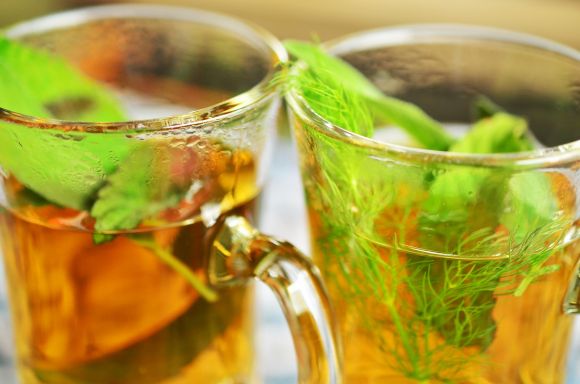
If regular bowel movements do not start shortly after completing the fast, water enemas will help. After you break a fast, it is best to start by eating half a banana and then choose a very bland diet as a transition. A bland diet consists of easily digestible foods, which can also be raw food.
5. Alternative juice fasting
Another easy method is to take apple cider vinegar and combine this with a juice fast. The biotin contained in apple cider vinegar is required for the synthesis of fatty acids. And for this reason, it is effective in cleansing the colon.
It is recommended that you drink two teaspoons of apple cider vinegar in a glass of water; the vinegar can also be mixed with juice from artichokes, carrots, radishes, or beets. The vegetables should be raw, for example, as a fruit vinegar vinaigrette.
Juice fast
During a juice fast, you should drink only freshly squeezed juices from fruits or vegetables and herbs. This is done in the morning, at lunch, and in the evening, or in six smaller servings at regular times throughout the day.
Juice fasting is supposed to help prevent diseases, purify the blood, stimulate the liver and renal function, protect the intestines, heart, and circulation, and reduce obesity.
In my opinion, juice fasting is effective when people don’t “sin too much;” that is, when they already eat a primarily vegan diet.
I especially recommend vegetable juices. You would only buy vegetable juices and then drink these in any quantity you like for about seven days. However, these are usually pasteurized and are therefore not raw.
In addition, I would recommend that you drink apple cider vinegar as described above. This is a way to avoid colon cleansing with enemas or actual fasting, which most people find to be unpleasant. It is very important not to eat anything during this time.
However, most raw foodists likely do not do any colon cleansing or juice fasting before starting on their raw food diet as they were not informed about the benefits of these. However, I try to provide as thorough of information as possible.
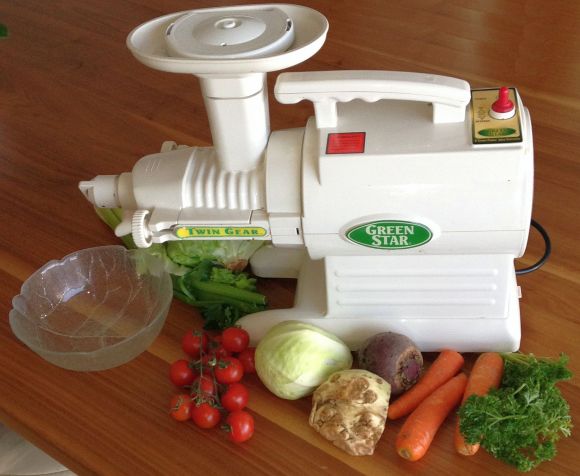
6. Robert Gray method
I am actually opposed to methods for which an author also sells ingredients or tablets. But after reading Robert Gray’s booklet titled "Das Darmheilungsbuch, Gesundheit durch Kolon-Sanierung" (Book on healing your intestine, achieving health through colon cleansing), I came to the conclusion that he has successfully conducted this treatment for several years and that it is well thought out. His method avoids colonic irrigations.
In my opinion, he does make some dubious conclusions, (e.g., lymph mucilage) and describe a few procedures that I am skeptical of. For example, I am skeptical of his eye diagnosis or rather iridology. However, I would still like to introduce his method here in a little more detail.
A simple but effective method for “stressed Westerners”
Gray offers a simple but effective method for “stressed Westerners.” He believes that the intestinal function of most people is greatly impaired because of environmental pollution and the high proportion of animal products in our diet. In his opinion, there are rubbery, tough deposits on the intestinal walls which favor fermentation processes and impede assimilation.
His colon cleanse and healing concept are based primarily on three factors:
- stimulating lymphatic activity by brushing and the like,
- avoiding deposit-producing and clogging foods,
- and using two special herbal preparations that dissolve and bind waste products.
At the end of this section, you will find easy-to-follow instructions.
Gray believes that the colon is the key organ responsible for excretion of mucoid substances (mucus-forming) from the lymph and writes that is the case even if this idea may be new in orthodox medical circles
[249-38]. He justifies his concept with the observation that large amounts of light-colored, mucoid substances are found in the colon after manual lymphatic drainage or brush massage.
Mucoid mucus
Before this, Dr. Olszewski also observed how brush massage stimulates lymphatic flow (chyle) and causes reflux from the cisterna chyli back into the colon.
Gray explains:
Just like dead food, highly toxic substances such as coffee, sugar, and alcohol, spoiled food, drugs, medicines, and chemicals stimulate the automatic discharge of mucus in the digestive system. This is a natural protective mechanism to prevent the absorption of toxins.
He concludes [249-30]: I do not advocate that everyone should eat a completely mucus-free diet. That would, of course, be very valuable, but most people would not stick to it.
How right he is!
He refers to the following simply as mucus: mucins, colloids, certain mucopolysaccharides (glycosaminoglycans, GAGs), mucoproteins, glycoproteins, and other substances that form in the respiratory system, the digestive tract (intestinal mucosa), the lymphatic system, the uterus, the vagina, the urinary tract, and the connective tissue. This excludes nonsticky substances such as saliva, which allows gliding to take place [249-58]. Mucoid mucus can also be found in the inner layer of joint capsules.
However, it is thought that grains lose their mucus-forming activity during the sprouting process. Vegetables and fruits are virtually free of mucus-forming processes [249-65].
He rejects certain yeast preparations because they contain up to 50 % whey.

He also writes that polluted air can be mucus-forming, for example, in the case of passive smoking. He recommends enriching the air with negative ions to remove any suspended solids and microorganisms from the air. Air conditioners, hot air, falling air pressure, and dry, hot winds, in particular, generate an excess of positive ions, which can cause sensitive people to have asthma or hay fever attacks.
The blend of herbs and seeds is supposed to cause the old hardened residues to swell in the gut and leave it. It also promotes the proliferation of lactobacilli (lactic acid bacteria) in the intestine. These microorganisms are called lactobacilli because they occur mainly on grass, fruits, and vegetables and therefore later also appear in milk.
If the lactobacilli predominate, they cause a person to have more frequent bowel movements, up to more than one per day. That’s a good sign, as long as the stool still has some shape to it but easily breaks apart, because that means it is free of mucoid substances.
The opposite situation: However, if the body has absorbed almost all of the carbohydrates from the food at the time the food residues pass into the colon, a healthy population of lactobacilli will not be able to exist, and the putrefaction bacteria will dominate. That is because proteins, the food of putrefaction bacteria, are much more difficult to digest and assimilate than carbohydrates and is therefore always present in food residues
[249-73].
The onion deserves special mention here. It and the large amount of raw vegetables are perhaps the real reasons why the “Mediterranean diet” is considered to be particularly healthy. A Greek salad wouldn’t be a Greek salad without onion. Raw potatoes, for example, are not only gentle on the stomach, but also serve the same purpose. However, you shouldn’t overdo it either and eat one of these every day. See also information about Kartoffelsaft (raw potato juice).
Fibrous materials (fiber) have the same effect and also reduce blood lipid levels. Gray does not think much of bran as the presence of phytate (phytic acid) in whole grain bread causes calcium deficiencies.
He also writes, Science is of the opinion that phytin also hinders the absorption of iron and zinc. The wheat bran available on the market usually contains about 80% of the phytic acid contained in whole grains
[249-78].
According to Gray, the mucus layers are made up primarily of glycoproteins (mucins), which form special mucus cells in the mucous membrane (tunica mucosa, mucosa) of the stomach and intestinal walls. This mucus is produced to protect the mucous membrane from adverse acids, and alkaline bile and pancreatic juice (pancreatic) remove it again.
He list various toxins, such as medications, heavy metals, half-digested foods, and pesticides that do so. If you were familiar with the composition of these toxic mucoid plaque layers, you wouldn’t be surprised at the sometimes astonishing successes that occur when they are removed.
Gray combines the positive effects of herbs and seeds with other measures. The brush massage helps the lymphatic system to better eliminate the released substances. It is much more effective than the best medicinal plants lobelia and English plantain, which are, for example, recommended by Dr. J. Christopher.
He recommends iceberg lettuce, yeast, and cabbage and other vegetables with a lymph-cleansing effect. Lemon balm tea does the same.
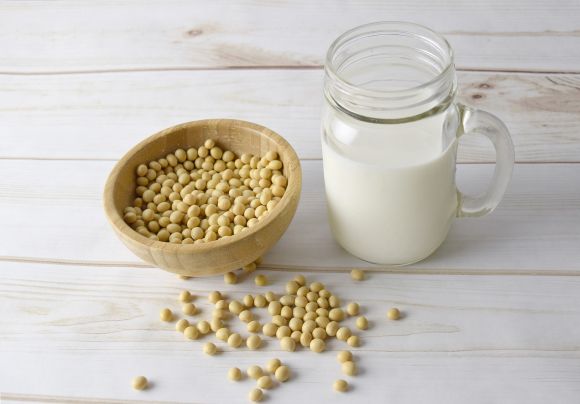
In addition, Gray strongly recommends a strict vegan (plant-based) diet since animal-based products (especially dairy products) increase mucus production in the digestive tract and hinder the cleansing program. He recommends continuing this diet after the course of treatment in order to continue to support optimal digestion.
You may eat as many fruits and vegetables as you want, but if you also consume relatively small amounts of dairy products, tofu (soybean curd), white flour products, and other mucus-forming foods, the accumulation of rotting waste in the colon will continue. The few people who truly eat a mucus-free diet will also have to remove accumulations of waste material that have collected prior to their change in diet [249-29].
6.1. The components of this course of treatment
Gray recommends cleansing herbs consisting of plantago, barberry root rind (berberine), fennel seeds, bark of the alder buckthorn (buckthorn bark as an effective laxative for the colon, glucofrangulin), ginger root, myrrh, raspberry leaves, rhubarb root (because of anthraquinones such as emodin and rhein), peppermint (menthol), sorrel, Devil’s Walkingstick root (probably aralia spinosa), and lobelia.
In addition, he integrates other herbs including alfalfa (lucerne), dandelion root (bitter compounds), horsetail (for silica and flavonoids), chickweed, marshmallow root (mucilage), sorrel, rosehip (galactolipid), "hawthornberries", Iceland moss, seaweed, and licorice (e.g., because of glycyrrhizic acid — see also problems with high blood pressure), as well as amylase and cellulase as enzymes. All of the necessary vitamins, minerals, and trace elements are found in these.
It should be taken together with psyllium husk powder
This then removes the loosened fecal deposit layers from the intestinal walls. These should then attach to the psyllium mixture, which ensures rapid elimination from the intestinal tract.
Finely ground psyllium will swell up in the presence of liquid bentonite or other fluids, thus creating large amounts of a soft gelatinous substance. It takes on the form of the alimentary canal and sweeps up loose substances like a broom.
In conjunction with the cleansing herbs, ground psyllium is a very important part of the Clean-Me-Out program, as is probiotic intestinal bacteria.
6.2. Specific steps
Since you might want to know what you are getting into, I would like to provide a review of the main points of the program here. For a certain length of time, you would take purification tablets, an intestinal bulking agent, and lactobacilli. Per teaspoon of intestinal bulking agent, you drink a cup (250 mL) of liquid. You continue to eat your regular diet, but ideally you would eat a diet of raw vegetables and fruits.
More information
You can find the book "Die Sonnen-Diät" (The sunfood diet) by David Wolfe with this information on the Internet as a Google book and if you search for “Robert Gray” (1946–1990, car accident), you can find his website where the products listed above are offered.
If you search for the term “dairy products,” you can read more about the reasons why Wolfe recommends omitting milk and dairy products. See this book review or also this one to read more about why milk is harmful.
Gray offers three different types of intestinal bulking agents (Massebildner), one of which is called Intenstinal Bulking Agent III (Massebildner Normal), 340 g.
This intestinal bulking agent is a prebiotic soluble plant-based carbohydrate that supports, promotes, and nourishes lactobacilli and bifidobacteria, the probiotic microflora in our gut.
Intenstinal Bulking Agent III
Intenstinal Bulking Agent III (Massebildner Normal), 340 g.
See Internet. This product is a blend of premium quality powdered herbs to be taken one to four times daily with liquid throughout the cleansing period. Its primary herbal constituent psyllium is supplemented in its effectiveness by inulin, dandelion root, and other palliative herbs that work gently on the deposits in your intestine and support your gut flora. (2+ bottles required for each month of cleansing)
is the advertising text (translated from the German text on www.graykur.de).
Ingredients: Psyllium seed husks, inulin (from chicory root), dandelion root, spirulina, cloves, and d-calcium pantothenate [vitamin B5].
Here is a quote above from holistic horizons.com: Intestinal Bulking Agent III with new formulation and improved taste is our most recent significant breakthrough for maintaining a healthy population of lactobacteria in one’s intestinal tract while cleansing the entire digestive system. It is brought to you by the developer and originator of the world’s first and still the world’s best herbal intestinal cleansing program.
This new formulation yields a two- to three-fold increase of lactobacteria-enhancing activity over earlier products, while providing improved taste and multiple other proven healthful benefits that give even greater assurance that you need not cleanse the intestines first and reimplant lactobacteria later, while still providing the lubrication and absorptive effects needed to sweep loosened mucoid matter from the system. You may now cleanse and promote an abundant implantation of lactobacteria at the same time! The Holistic Horizons Intestinal Bulking Agent III and Intestinal Cleansing Formula tablets should both be used together to achieve this effect, as both contain required complementary ingredients to provide a synergistic benefit.
Holistic Horizons is Gray’s trademark.
Gray divides the treatment into the dosage levels A through I; the first five levels (A–E) last for three days each, the next two (F and G) last for two weeks each, and level H lasts three weeks. The final level (I) does not have a set time frame.
You take only bulking agents as follows
During the first four levels, you take only bulking agents as follows: 2 x 2 to test tolerance, then A 1 x 1, B 1 x 2, and C and D 2 x 1 teaspoon with the appropriate amount of fluid.
The first number corresponds to the number of level teaspoons; the second number refers to the number of times taken per day. For the levels D–I, you also take cleansing formula tablets, starting with half a tablet for D and E, and then a tablet for F and G, two tablets for H, and three for I. This also applies to the intestinal bulking agents, which are taken as follows: E + F 2 x 2, and after that always 2 x 4.
Level A is considered to be a tolerance test as people on different diets react differently. If you feel uncomfortable with the treatment, you are supposed to take a break for three days and start again with level A and then go on to the following levels. If you want to lose weight, the tablets should be taken one hour before a meal. If you do not want to lose any weight, then take them one hour after a meal.
Weight loss takes place as a result of the swelling process which curbs the appetite.
The fourth dosage is taken before going to bed. Frequency and quantity of bowel movements should increase. Over time, the gastrocolic reflex should return and induce defecation whenever the stomach is filled. I assume this would happen during the treatment, if at all.
 |  |
At the beginning of the cleanse, you may experience reactions. If this happens, go back to a more tolerable level. Then go through the following levels again. The days indicated denote the minimum time. If constipation occurs, you should drink more liquids or even better yet, get an enema or colonic irrigation. If you take the bulking agent on an empty stomach, discomfort or heartburn may occur shortly thereafter. This can also happen if larger quantities of softened toxic material return to the alimentary canal.
Chronic inflammatory bowel disease and medicines
People with ulcerative colitis or a chronic inflammatory bowel disease such as Crohn’s disease (regional enteritis) should in no case use these cleanse tablets. Taking bulking agents and changing their diet should do the trick.
Anyone regularly taking salicyclaten (salicylic acid) or medicines that contain digitalis (cardiac glycosides) or "nitrofuranto.." (for urinary tract infections) should not do this treatment.
Pomegranates and its juice stimulate the colon greatly.
After three to five weeks, in particular, the same bowel movement can contain feces of different colors. This occurs if instead of putrefaction-forming substances, putrid material is excreted. If undetected intestinal parasites are present, they will also be excreted.
The program should not exceed three to five months so that sensitivity to the herbs is maintained and homeostatic resistance does not develop [249-138].
6.3. Brush massage
Colon cleansing can be intensified with a brush massage. Take a bath brush with a long handle and plant bristles. The brush does not get used for bathing, but is kept dry. Don’t brush back and forth, but instead brush lightly from all parts of the body toward the abdomen. You, for example, brush the neck, shoulders, and torso with sweeping movements.
Brush the arms and legs toward the abdomen. The procedure takes about four minutes and is very pleasant. The brush massage can be done daily, but you should reduce it to only twice a week after three months, so as not to produce a habituation effect.
6.4. Rejuvelac
This beverage, which you can easily prepare yourself, is recommended by various raw food authors, including Dr. Ann Wigmore. Her successors maintain an informative raw food website [living-foods.com]. Most authors use grains as the starting product.
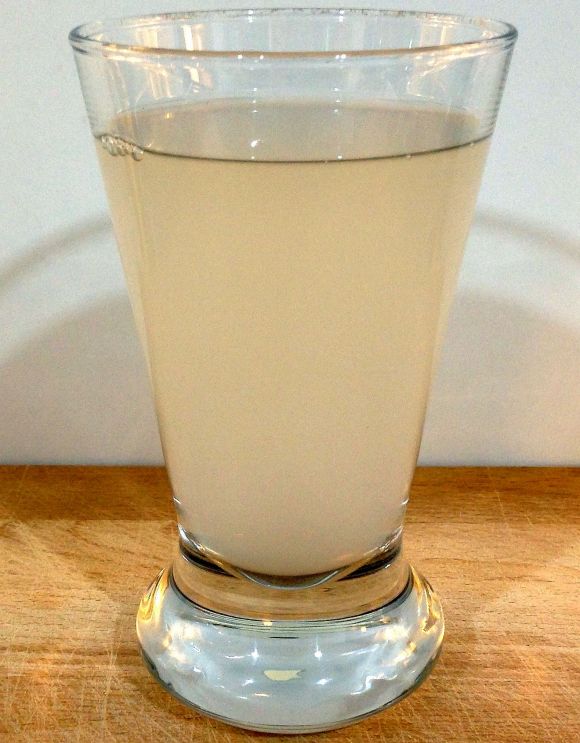 | Rejuvelac is relatively well known in the United States. You sprout grains such as quinoa, barley, millet, buckwheat, or rice or use fresh seedlings. You leave these in clean water for two days at room temperature. Then you compost the seedlings and use only the ready-to-drink liquid. An additional drink can be made from this first batch within the first 24 hours, but only once because otherwise it spoils. |
In Romania, it is common to make bors from wheat bran. In other Eastern European countries, borscht is a raw or cooked soup, with or without natural fermentation of beets.
There is a long list of products available that are spontaneously fermented. But few of them are raw and made without soy or milk. List of fermented foods. See kombucha as an example. Marinating or pickling are ways of preserving foods.
Prepare your Rejuvelac
The following method seems better for our purposes. After an antibiotic treatment or for this cleanse, lactobacilli would be highly beneficial. They are easy to grow:
Cabbage is a vegetable that is teeming with lactobacilli. To get cabbage rejuvelac and trigger fermentation, you don’t need a starter. In the morning, mix 1¾ cups distilled or purified water with 3 cups (not packed) coarsely chopped, fresh cabbage and ⅛ teaspoon granulated, dried garlic.
Set the mixer first to the lowest speed, then go to the highest level, and mix everything a little more than 30 seconds! Then pour the mixture into a larger container, cover it, and let sit at room temperature for three days. After that you can pour off the liquid rejuvelac [249-146].
At least in Switzerland, tap water can be used in most places. If the tap water is chlorinated, to be safe you should cook it for 30 minutes so that any residual chlorine is removed and bacteria is destroyed. Noncarbonated mineral water would be an alternative.
Next prepare your rejuvelac within 24 hours; 1½ cups of water plus 1½ cups of ready rejuvelac, mix well and add the cabbage. However, you should frequently start with a fresh batch (48 hours) to avoid faulty fermentation.
Good rejuvelac tastes delicately tangy, a flavor that is a bit of a combination between mineral water and yogurt whey, writes Gray.
Bad rejuvelac tastes and smells somewhat foul (like old cheese), and you should not drink it. Rejuvelac should be drunk within 24 hours and the rest should be discarded.
7. Theory and practice
If you have read through my writings on colon cleansing, you’re either convinced by a method or you might ask yourself What’s all this ‘magic’ for — why not just start straight away with a raw food diet?
The following is a response that could be expected from an internist: Within three days before an intestinal surgery, the colon gets cleansed. I have seen a lot of colons from the inside and after this they are clean.
I myself did a juice fast for a good 10 days when I first changed my diet although at the time, I didn’t even know about the “necessity” of a colon cleanse. I’m sure that did the job. After that, I developed a bread substitute for breakfast called Erb Muesli, which contains a lot of fruit. But even before this, I didn’t eat too much bread.
My experience
During a colonoscopy, I was able to see the inside of my colon. There were only a few other particles in the otherwise beautiful pink colon. I understand the necessity of the unpleasant but brief procedure to get a clean colon but not the longer method developed by Gray, even if it is perhaps more pleasant.
However, in 1978 black spots were found in my colon and the report said the following: The cecum shows a pseudomelanotic discoloration (dirty brown spots) although the patient claims to never have taken laxatives.
Such spots are apparently quite common, but there is no explanation for them. But that would mean that the neuron impulses would be conducted poorly or not at all. In such a case, a person should avoid garlic, onion, and vegetables in the cabbage family or rather dextrorotatory sugar (4th to 7th sugars).
It is conceivable that individuals with poor eating habits, which also lead to obesity, have a gut as described in colon cleansing books. If this is the case, it really is necessary to do a colon cleanse to return the colon to its healthy level of functioning. This would then also result in weight loss. In this light, I can see how a longer procedure would be needed.
One more thing. The acidic environment in the stomach serves two purposes: one is to dissolve substances that are soluble by acid and the other is to kill microorganisms. The stomach acid then can also kill the lactobacillus during passage through the stomach.
The industry has developed stomach-resistant capsules that release the desired microorganisms once they get to the intestine. However, writers such as Gray state that these are dead microorganisms. I have not yet been able to get clarification here since there are conflicting opinions even within conventional medicine.
The views of Viktorus Kulvinskas, a well-known enzyme researcher
Ann Wigmore writes about the views of Viktorus Kulvinskas, a well-known enzyme researcher, who stated that stomach acid deactivates microorganisms in the stomach, but that these are then reactivated in the small intestine.
One thing is clear to me; nature has always ensured that there is a strong flora of microorganisms in our intestine. Passage through the stomach is in principle possible.
Drinking a beverage on an empty stomach that contains large quantities of microorganisms provides a great opportunity for the microorganisms to pass through the stomach. An empty stomach lets a drink without sugar pass quickly and because of the amount, the pH hardly changes. The reflex and amylase caused by chewing are also missing.
Another possibility is as follows: without chewing very much, you can eat large pieces of vegetable that naturally contain microorganisms or even enrich them before eating. I wonder why eating the pieces of cabbage is not part of the instructions for making rejuvelac.
7.1. Enzymes and raw food
Enzymes are catalysts that are involved in all metabolic processes. Without enzymes (via peptides and polypeptides made up of amino acids), your digestive system cannot metabolize vitamins, trace elements, and minerals efficiently.
So what good is it to take vitamins that don’t contain the necessary enzymes [224-12]?
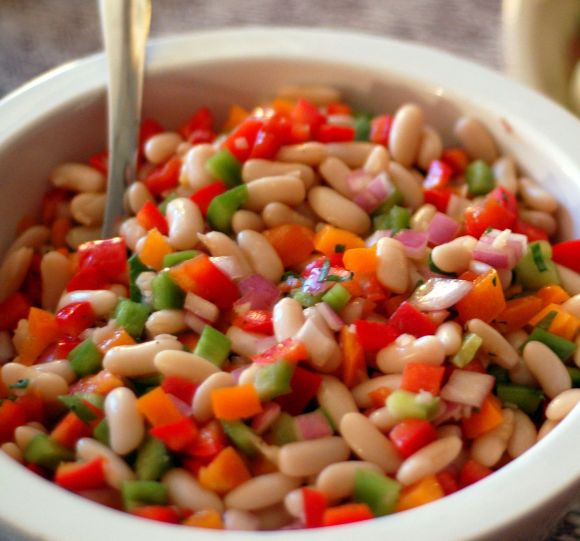
The human intestinal mucosa does not have the enzymes needed for the very complicated splitting of oligosaccharides found in cooked legumes. Oligosaccharides are medium- to long- chain sugars. Many carbohydrates remain in the intestines and only bacteria and fungi break them down further. This breakdown leads to the formation of carbon dioxide, hydrogen, and methane. You may experience bloating, discomfort, or gas.
However, sprouting legumes such as lentils, mung beans, or chickpeas transforms the almost indigestible oligosaccharides into digestible monosaccharides. Sprouting activates life; cooking destroys life [224-14].
7.2. When will you have successfully switched your diet?
I divide the change to a raw food diet into three phases: adaptation (adjustment) of the digestive system, taste, and the body. Of course, it depends very much on how you go about making the change.
If you have a serious illness, I would recommend “letting your body feel” an immediate 100 % change. If you are switching because of a change in viewpoint, then you could go about making the change more slowly. The first step is to cut out all “bad substances.”
By this I mean “artificial products” such as coffee, chocolate, sweets, cooked meats, fried or grilled foods, and au gratin. At the beginning, you might still eat steamed vegetables and possibly boiled potatoes, but no bread or baked goods. Erb Muesli can serve as a bread substitute. Perhaps as time goes by, you may even cut out all animal products. You would then cleanse your colon using one of the methods above. Next you would switch to a completely raw food diet.
Only now will your digestive system begin to adapt. You can support this process, for example, by eating raw sauerkraut. This provides the intestines with the very important lactobacillus bifidus. This “plant bacteria” is also available in enteric-coated tablets to be taken orally.
How important healthy gut flora is
Very few people know just how important healthy gut flora is. Several authors, for example, believe that the increasingly common skin disease eczema (atopic dermatitis, not pellagra) is caused by unbalanced gut flora and an associated lack of vitamin B complexes [neurodermitis ch].
Amazon.com lists numerous books just on the subject of eczema alone and a lot of these focus on diet as a means to achieve healing. In rare cases, amalgam can lead to related vitamin deficiencies.
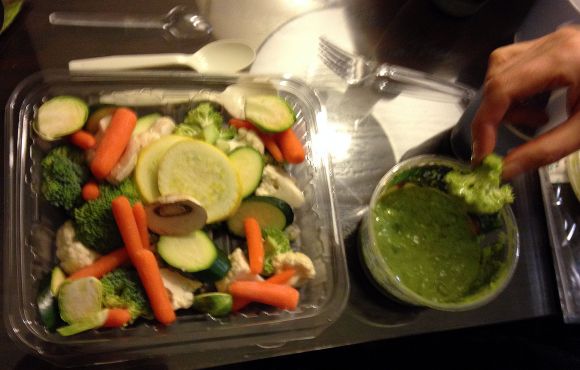
The first transition phase may sometimes be hard at first, especially if other family members around you continue to eat cooked food.
Vegetables, in particular, such as carrots, beets, celery, celery root, chicory (endive, frisee, raddichio), broccoli, and tomatoes provide for a wide range of taste experiences.
7.3. Insurmountable difficulties
It can take three months (see the book review on Salt Sugar Fat regarding salt) for your sense of taste to adjust. Positive changes will occur in your body, and exercise and physical activity will only add to the effect. When you look at “before” and “after” photos, you will see what I mean.
You can practically “feast” on vegan raw food, especially if you place a special emphasis on vegetables. For someone who is not yet a raw foodist, this can be hard to imagine. I understand. Please take pictures of yourself before starting with a raw food diet and then again six months later. Wear only a bathing suit, swim shorts, or underwear and stand in the same position for both photos.
If you are less than 22 pounds (10 kg) overweight, you will reach your new weight within six months. Further weight loss will depend on your current BMI.
| It would be great if you could send me your success story, if possible, with pictures — especially if I may publish it. Please, however, try to include a lot of information that might help others on their path. Please use the comment section below (also the option to select “internal”). Thank you. |
But if you can’t manage a complete transition, then at least begin to eat a raw breakfast by trying Erb Muesli. At lunch, you can eat fruits, berries, and nuts of all kinds. A snack can consist of apples. For dinner, you could steam well-seasoned vegetables and forego pasta and bread.
If you or your family can’t get along with only vegetables, then instead of potatoes, eat organic brown rice. Eating avocados also helps you to feel full. Plant-based foods without any animal products lessen the problems described above, especially when you alternate between raw and cooked food. For the evening, try first eating a variety of raw vegetables such as carrots, tomatoes, and celery with homemade guacamole. Eat dinner as early as possible and nothing else after that.
7.4. Cancer prevention
Here are a few reasons for a vegan lifestyle from the German Wikipedia article on cancer prevention. Interestingly enough the article on the English Wikipedia site is rather short and incomplete.
Some of the measures and habits are scientifically proven in their effectiveness by a number of epidemiological and retrospective studies. ... Approximately half of all cancers are estimated to have been avoidable simply by lifestyle. ... Cancer screening however is not part of cancer prevention. ...
Foods that have cancer-preventing effect
Avoiding exposure to carcinogens is one of the best methods of cancer prevention. Another is the inclusion of cancer-protective foods or dietary supplements. It has also been shown that vaccinations against certain viruses (hepatitis B and human papillomaviruses) significantly lowers the risk for some cancers.
The European Code against Cancer in its third version from 2003 lists the following seven ways that people can reduce the risk of cancer by making lifestyle changes:
Do not smoke; if you smoke, stop doing so. If you fail to stop, do not smoke in the presence of non-smokers.
Avoid obesity.
Undertake some brisk, physical activity every day.
Increase your daily intake and variety of vegetables and fruits: eat at least five servings daily. Limit your intake of foods containing fats from animal sources.
If you drink alcohol, whether beer, wine, or spirits, moderate your consumption to two drinks per day if you are a man and one drink per day if you are a woman.
Care must be taken to avoid excessive sun exposure. It is specifically important to protect children and adolescents. For individuals who have a tendency to burn in the sun active protective measures must be taken throughout life.
Apply strict regulations aimed at preventing any known cancer-causing substances. Follow all health and safety instructions which may cause cancer. Follow advice of national radiation protection offices.
Some foods apparently have cancer-preventing effects. These include:
Vegetables containing little starch (for example broccoli, cauliflower, zucchini, kale, and spinach) site of action: mouth, pharynx, larynx, esophagus, and stomach.
Vegetables of the genus allium (for example wild garlic, onion, chives, and shallots); site of action: stomach
Garlic; site of action: colon and rectum
Fruits (for example, apples, pears, table grapes, and bananas); site of action: mouth, pharynx, larynx, esophagus, lungs, and stomach.
Folate-containing foods (for example, whole grains, green leafy vegetables, beets, broccoli, carrots, asparagus, brussels sprouts, tomatoes, egg yolks, and nuts); site of action: pancreas
Foods containing carotenoids (such as carrots, spinach, apricots, bell peppers, and shrimp); site of action: mouth, pharynx, larynx, and lungs
Foods containing beta-carotene (for example, carrots, sweet potatoes, pumpkins, apricots, spinach, broccoli, and beets); site of action: esophagus
Foods containing lycopene (such as tomatoes, rose hips, and watermelon); site of action: prostate
Foods containing ascorbic acid (vitamin C) (for example, citrus fruits, rose hips, black currants, parsley, kale, and brussels sprouts); site of action: larynx
Foods containing selenium (such as garlic); site of action: prostate
The World Cancer Research Fund (WCRF) lists nine other foods or food groups with possible canter-protective effects (limited suggestive).
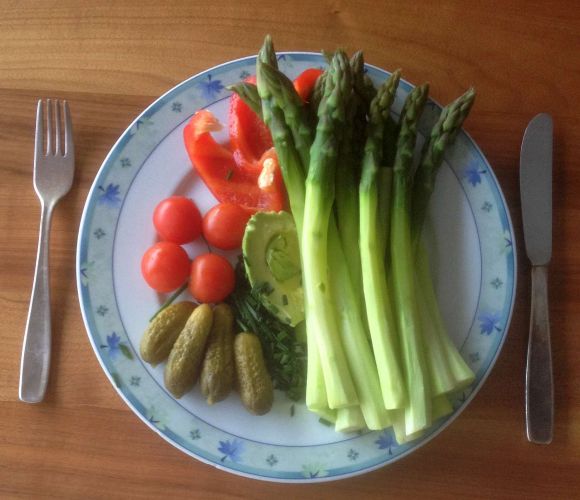
As part of the EPIC study, which has been in progress since 1992 in ten European countries, eating habits, body weight, size, and body fat distribution of about 519,000 participants (all healthy at the beginning of the study) are being statistically recorded (European Prospective Investigation into Cancer and Nutrition).
Some of the initial findings
Here are some of the initial findings:
-
Increased fiber intake reduces the risk of colorectal cancer. Even an increase in the daily amount of fiber from 15 to 35 g reduces this risk by 40%.
-
High consumption of meat (red meat) increases the risk of intestinal cancer while fish consumption significantly reduces this risk. For every 100 g of red meat consumed, the risk of intestinal cancer increases by 49%. In the case of sausage, it increases up to 70%. In contrast, for every 100 g of fish consumed, the risk for this disease is cut in half.
-
Eating 80 g of fruits and vegetables every day reduces the risk of mouth, throat, larynx, and esophagus cancer by 9%. This effect holds true up to a threshold of 300 g per day. Larger quantities apparently do not further reduce the risk of the disease.
-
Eating an increased amount of butter, margarine, processed meat, and fish, together with a low amount of bread and fruit juices, increases the risk of breast cancer.
Directly after their consumption, some phytonutrients act positively against carcinogenesis (tumor development):
Antioxidants bind and eliminate free radicals.
Carotenoids, polyphenols, and flavonoids attach to the DNA in the nucleus so that no carcinogens can attach themselves.
Phenolic acids, glucosinolates, and sulfides inhibit certain enzymes that catalyze the conversion of procarcinogens, such as aflatoxins or nitrosamines, into carcinogens.
By contrast, glucosinolates, monoterpenes, sulfides, and polyphenols stimulate carcinogen-detoxifying enzymes.
Phenolic acids, ellagic acid, ferulic acid, and caffeic acid bind with carcinogenic polycyclic aromatic hydrocarbons and detoxify them that way.
Phytosterols and saponins inhibit the proliferation of tumor cells in the colon.
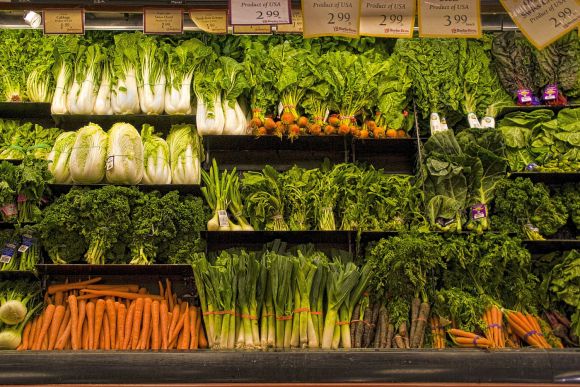
Abstaining from tobacco use and avoiding alcohol works wonders. I am therefore including the whole quote here from Wikipedia (German version):
Statistically, 25 to 30 % of all cancer-induced deaths in developed countries are attributable to long-term tobacco smoking. Between 87 and 91 % of all lung cancers in men and 57 and 86% in women are caused by smoking cigarettes.
The link between smoking, alcohol consumption and lung cancer
The link between smoking and lung cancer is now well known (appropriate warnings are included on the packages of tobacco products). For a number of other cancers, such as the group of head and neck cancers (oral cancer, nasopharyngeal cancer, oropharyngeal cancer, pharyngeal cancer, laryngeal cancer, and tracheal cancer), the link between smoking and the corresponding cancer has also been scientifically proven. In breast cancer, epidemiological data shows that smoking increases the risk of disease by about 30%. Also in colorectal cancer, increased longtime tobacco consumption increases the risk of the disease significantly.
Many studies show a clear correlation between regular alcohol consumption and an increase in the risk of cancer.
For breast cancer, the threshold at which alcohol consumption causes a significantly higher risk of disease is less than one or two alcoholic drinks per day. The risk is increased especially for estrogen receptor positive (ER+) tumors. The type of beverage, whether beer, wine, or spirits, or the color of the wine does not matter.
The risk rises in a dose-dependent manner. Consuming 15 to 30 grams of alcohol daily, which is approximately one to two alcoholic beverages, increases the risk by a factor of 1.33 (= 33 %, the confidence interval for 95 % probability is 1.01 to 1.71). The risk rises dose-dependently; drinking once a week increases the risk by 2 % per drink, and weekend consumption increases the risk by 4 %. Excessive drinking with four to five drinks per day increases the risk by 55 %.
This is the information found on the German Wikipedia site under cancer prevention as of April 2014.
The tabloid press and media are still filled with well-packaged advertisements, which serve as trend setters. For example, the public listens to the tales about how good red wine (instead of grapes) is a reason why the Mediterranean diet is so healthy, which is unfortunately not true. Other types of deaths not caused by cardiovascular problems are simply more common.
To find answers to the questions, “How do I start with raw food” “How do I eat raw food” and “How do I prepare raw food,” you may have looked for a raw food cookbook. As a thank-you present, an emeritus professor from Munich recently sent me a small cookbook that I highly recommend. It is called "Rohvegan, mein 4-Wochen-Selbstversuch (Raw vegan, my 4-week experiment") by Claudia Renner (German only, 2014).
There are also numerous English-language raw food cookbooks available on amazon.com. You just need to search “raw food recipes.” The website living-foods.com also offers a number of interesting recipes.
| Solution: The slightly different course of the hypotenuse makes more space when the masses of the total triangle are apparently equal even though the shapes are differently arranged. |
The small triangles have a slightly different angle. The illusion can be seen at the end of construction.

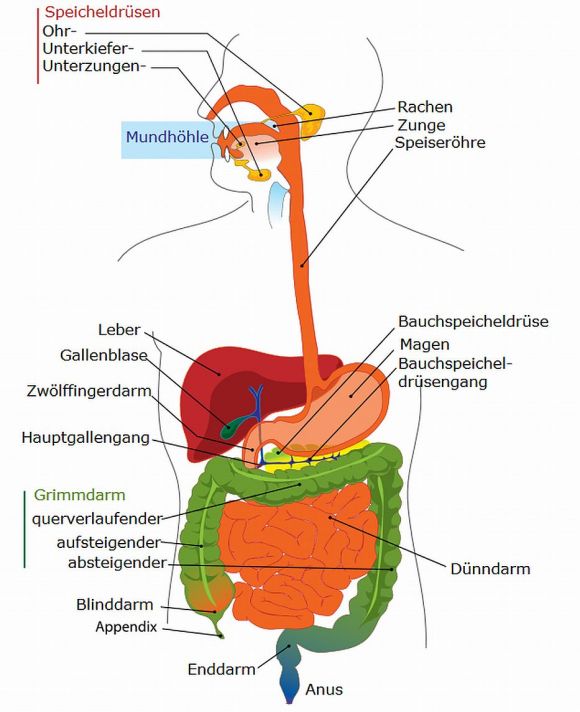
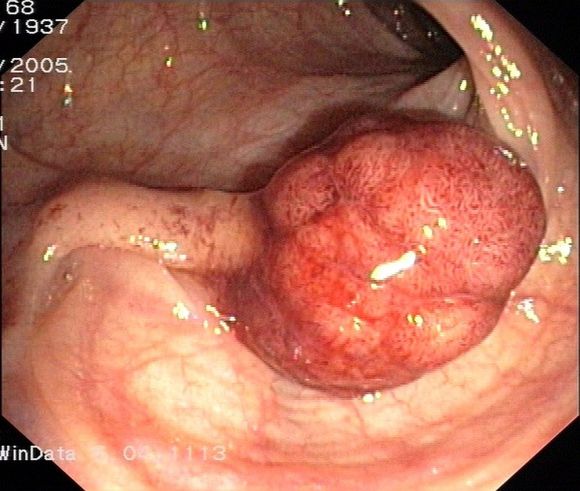

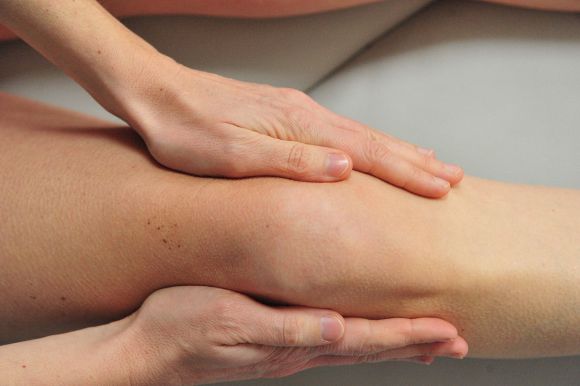
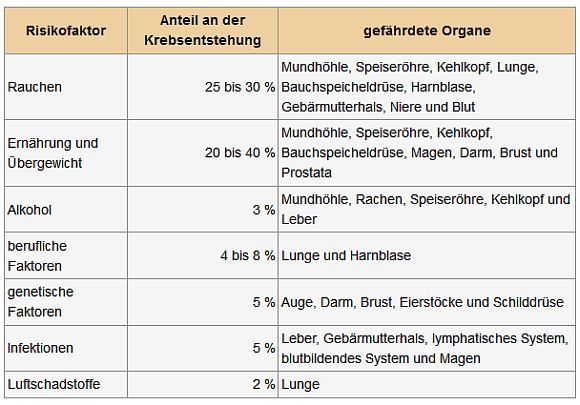
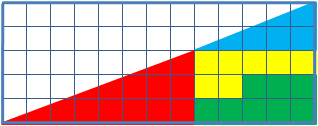
Comments